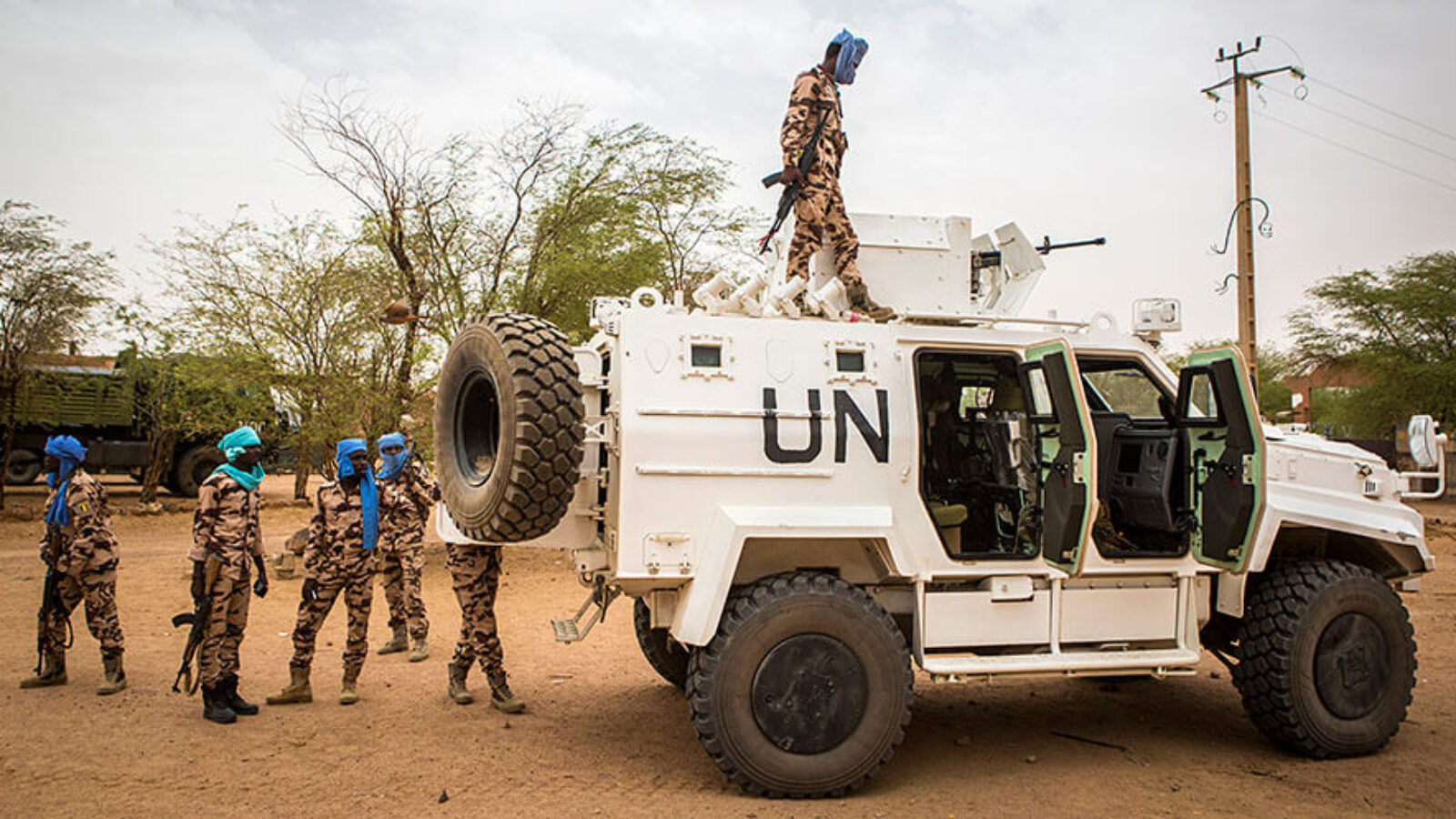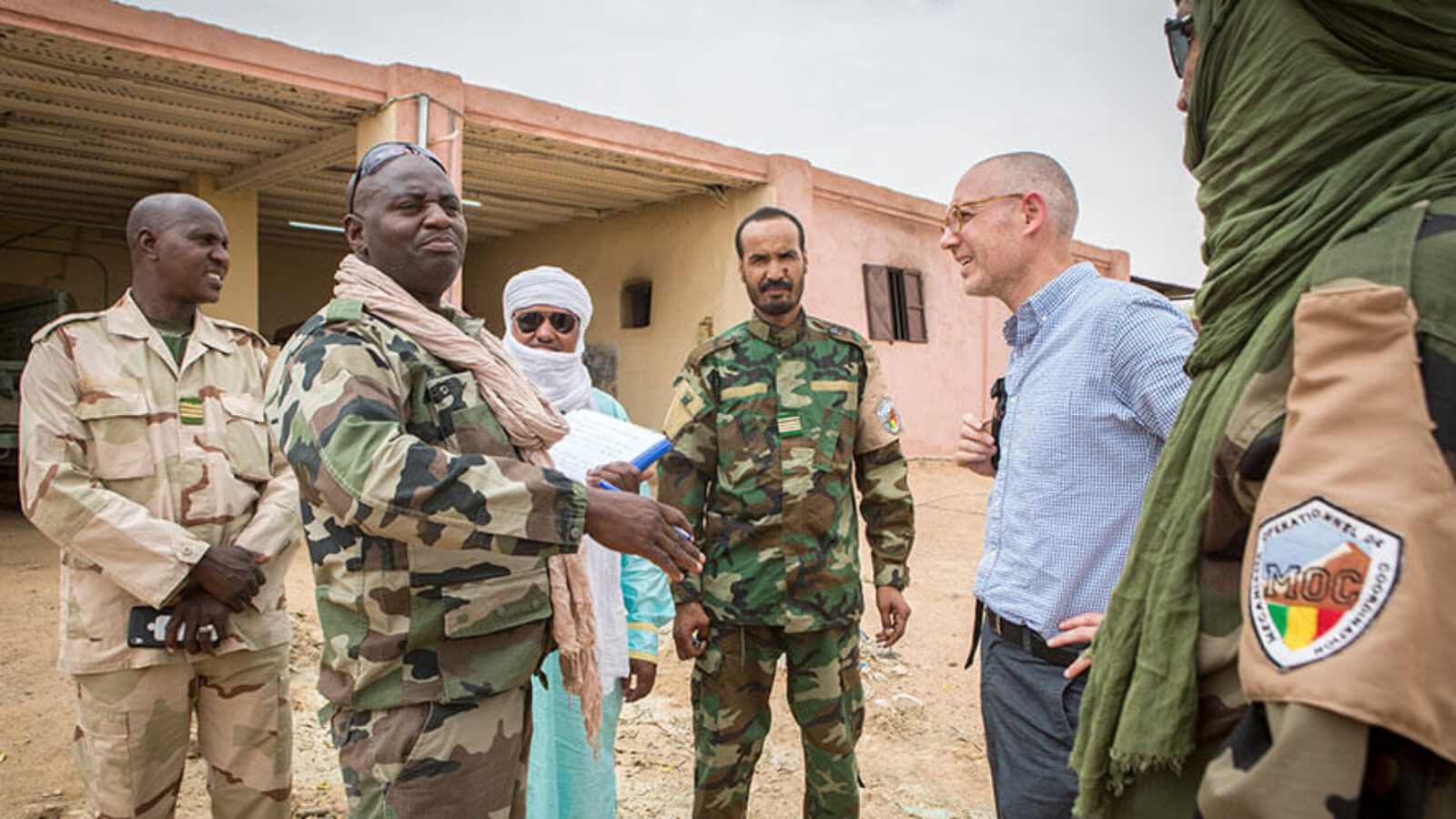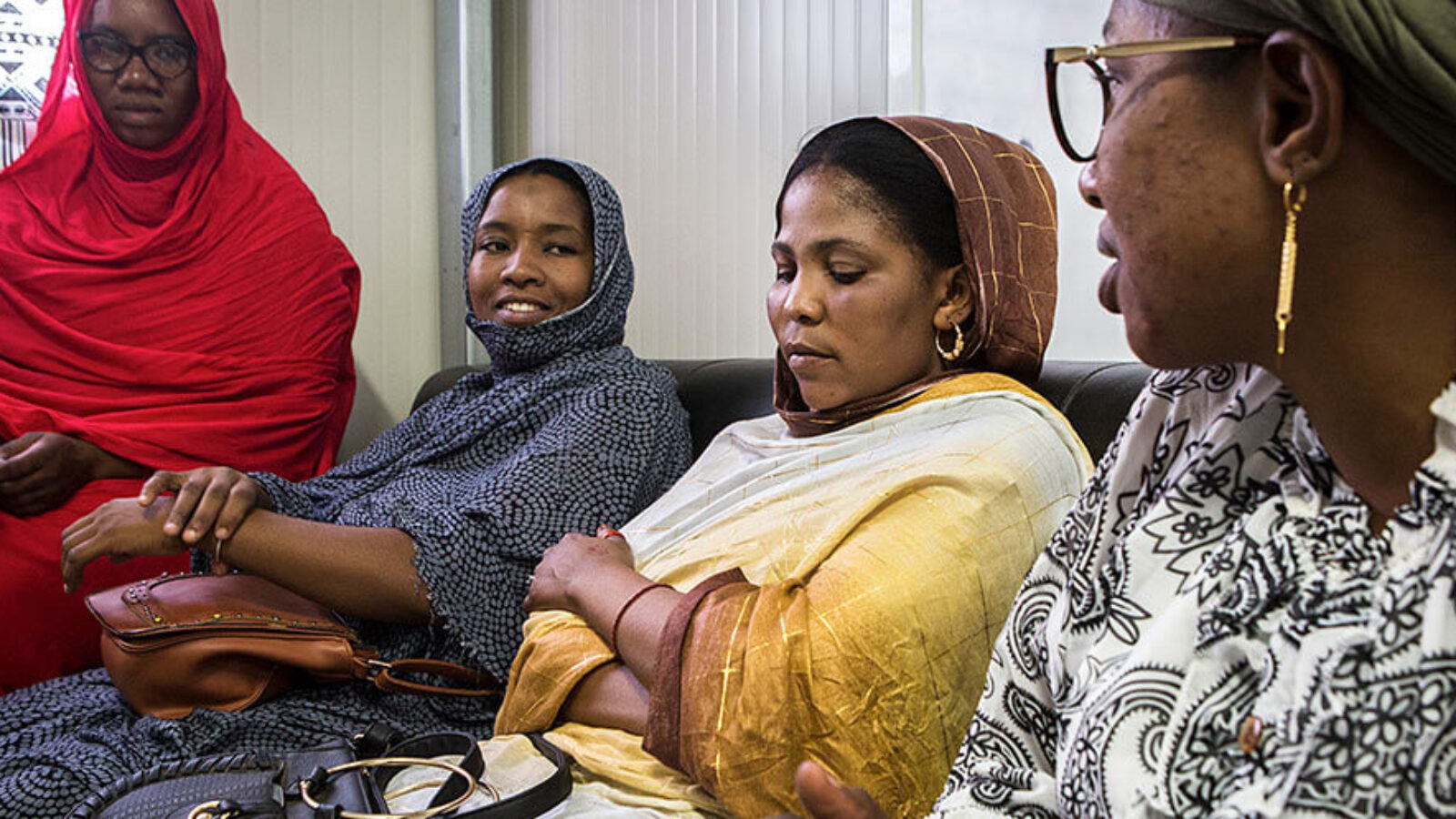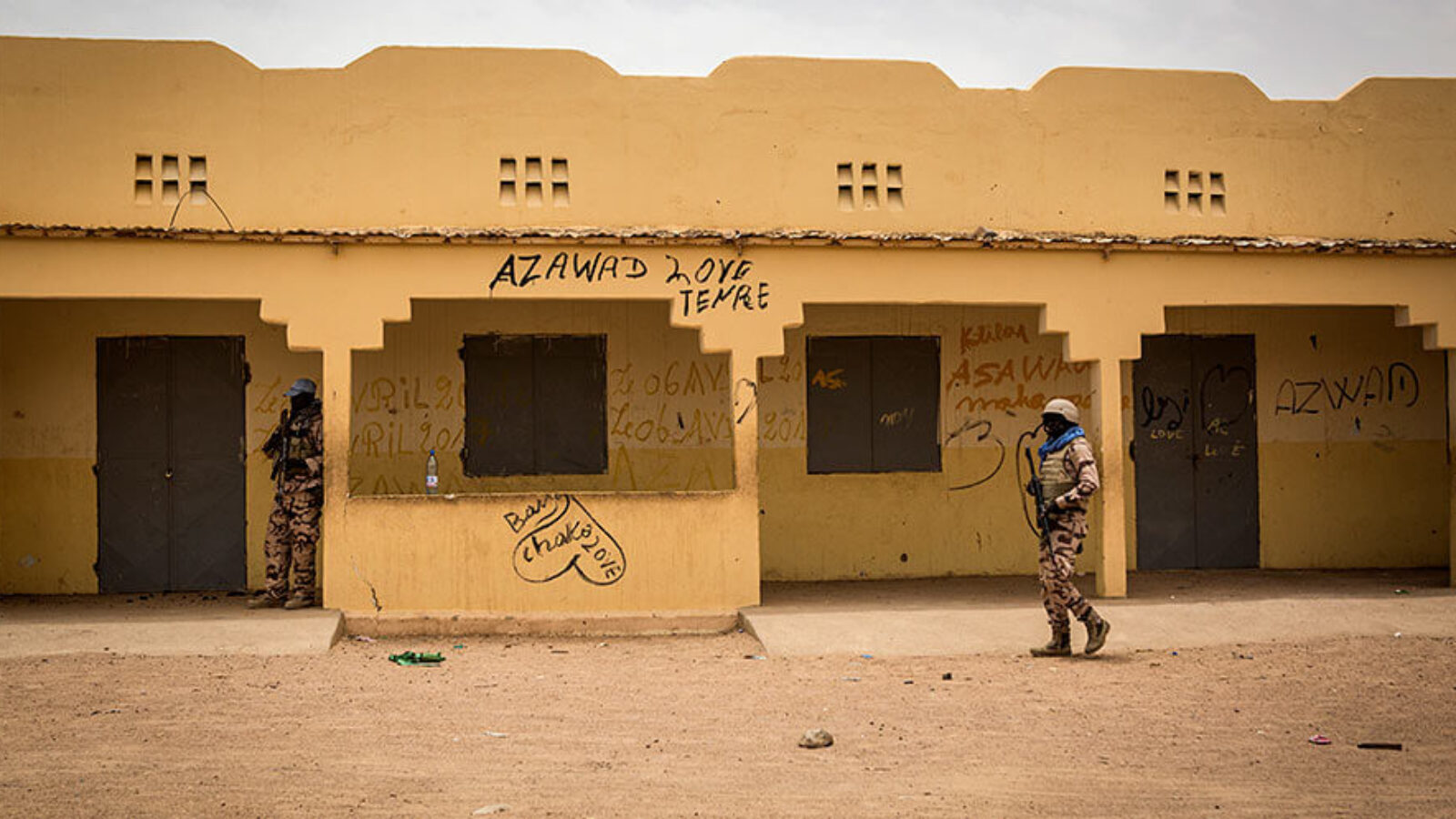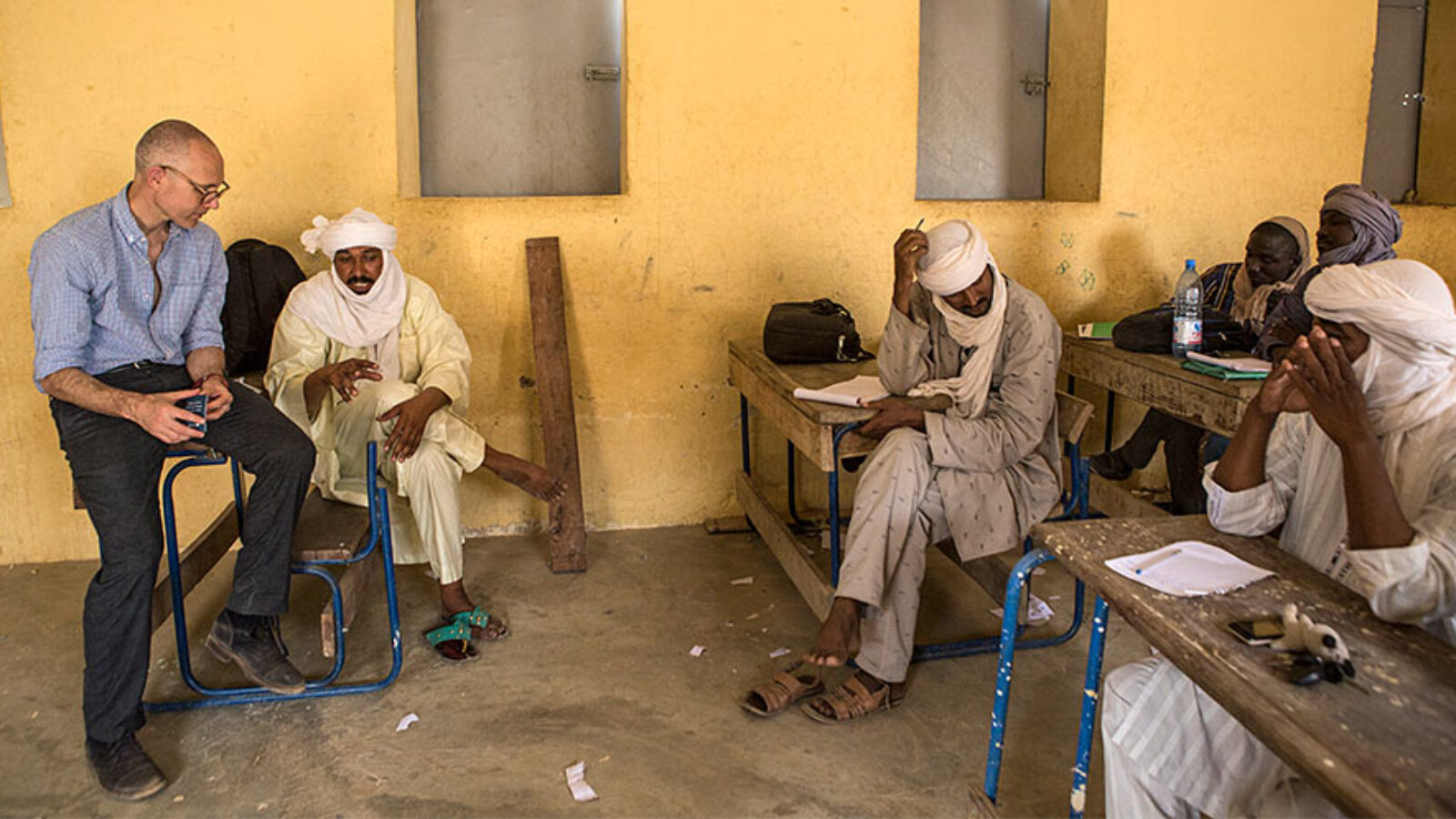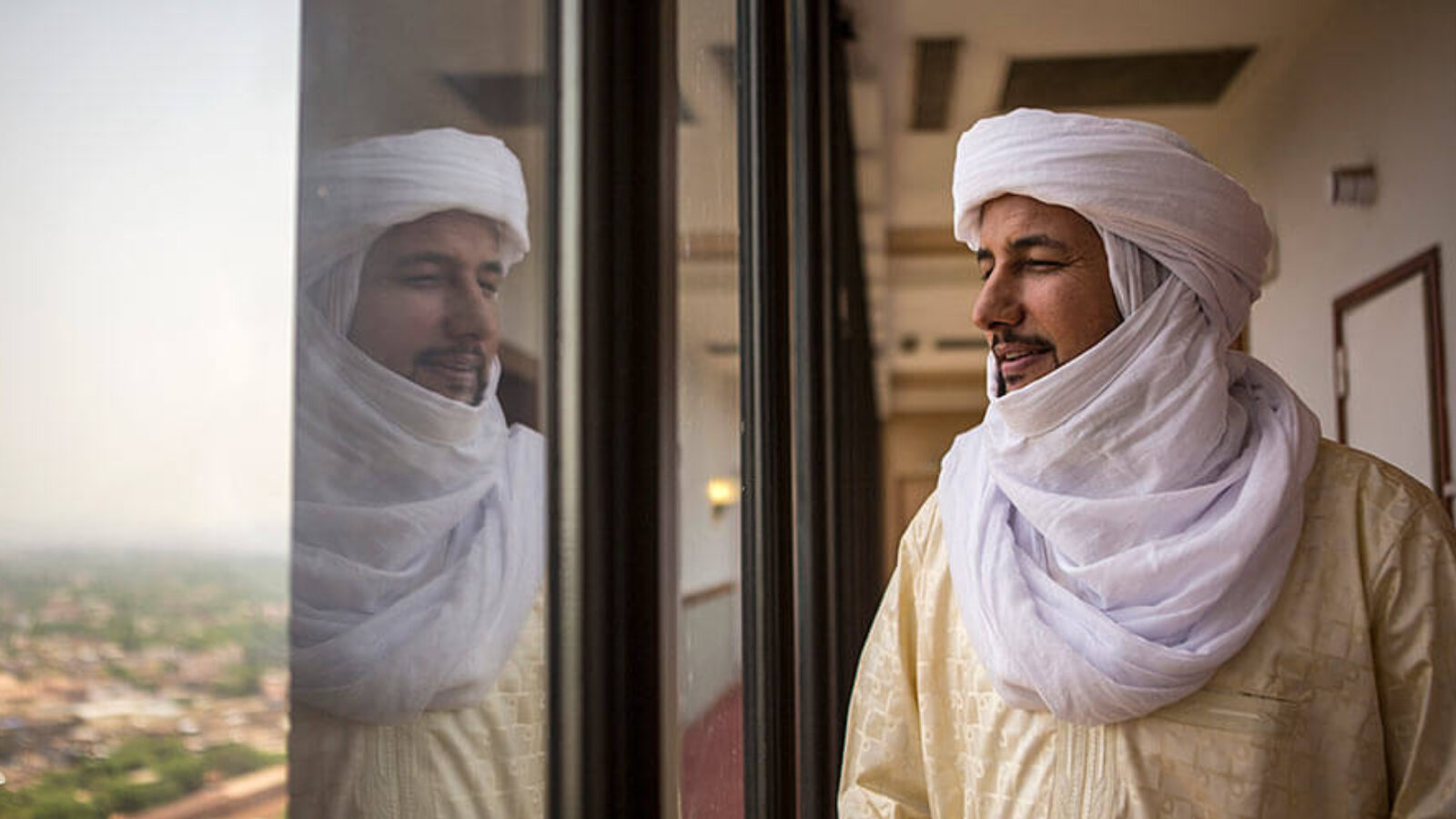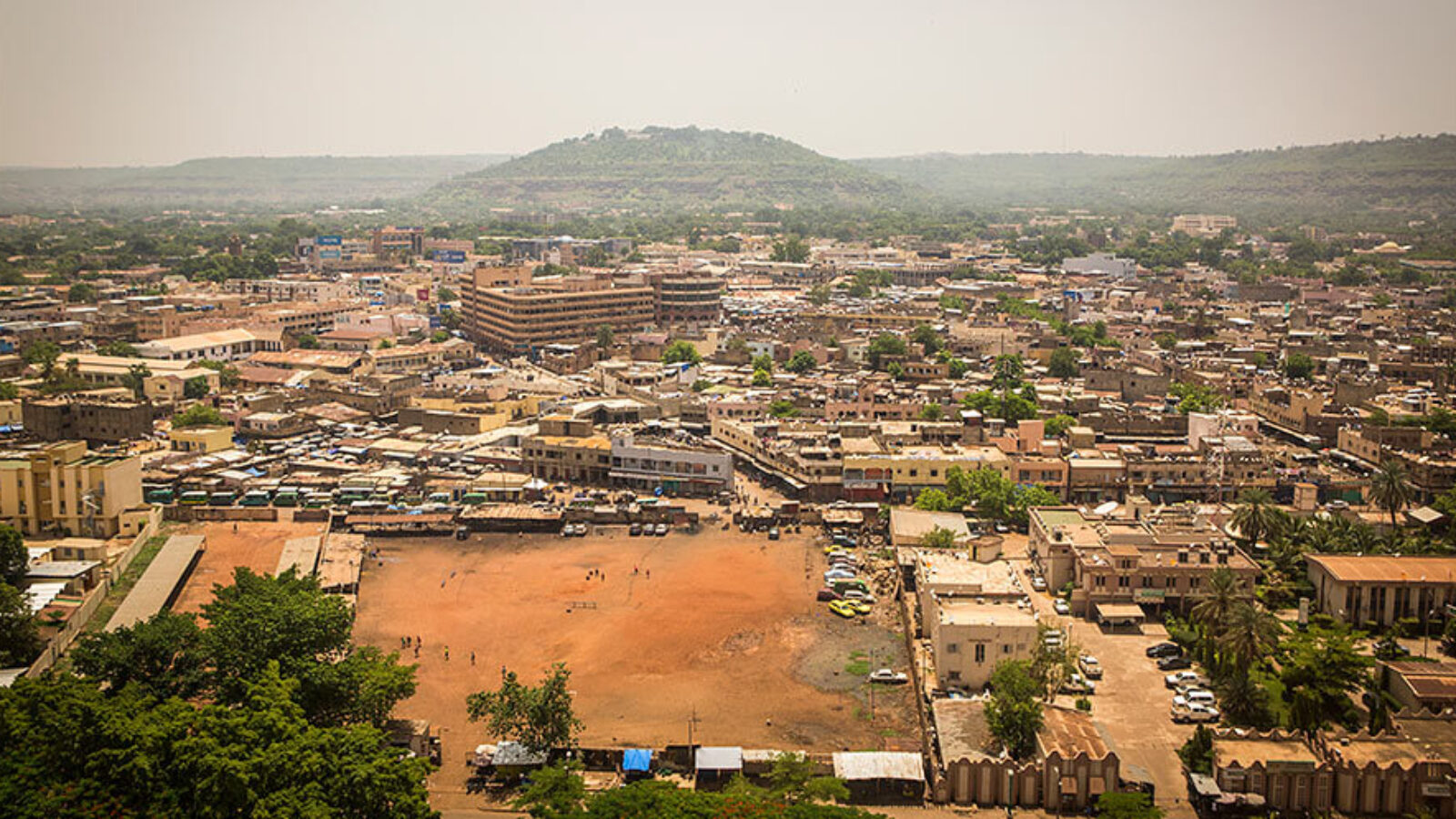Under the Malian Sun
The Carter Center Observes the Implementation of a Peace Agreement in Mali
One bright morning in mid-June, a U.N. convoy rolls through the small, dusty town of Kidal in Mali’s northern desert.
The temperature is already well on its way to a high of 114, and few people are on the street to witness a Carter Center staffer in a blue flak jacket and helmet clamber out of the back of an armored personnel carrier (what a civilian might call a tank) into the brutal heat.
To reach this isolated spot in the Sahara, John Goodman has already taken a U.N. plane and a U.N. helicopter. Now, flanked by a team of U.N. peacekeepers on alert for possible attacks by extremists, he’s headed to the first of the day’s four meetings with community leaders and military commanders to learn more about the state of affairs in this oft-ignored region.
The Aftermath of War
In 2012, separatist rebel groups teamed with jihadists to try to win independence for Mali’s sparsely populated northern region, including the towns of Kidal, Timbuktu, and Gao. They took control of the north with ease and began making their way toward the capital of Bamako. Then Mali’s former colonizer, France, sent troops to help the government. The rebels retreated, and in 2015, the government of Mali, a rebel group called the CMA, and a pro-government militia group called the Platform all signed a peace agreement.
While that might seem like an end, it was really a beginning.
“Many people think a peace agreement is a simple document – a piece of paper promising an end to fighting – but these agreements are incredibly complex,” said Goodman, an associate director in the Carter Center’s Conflict Resolution Program. “Mali’s agreement includes 78 individual items that one or more of the parties committed to doing to help achieve lasting peace.”
In 2018, at the request of these parties, The Carter Center began serving as the Independent Observer of the implementation of the peace agreement.
The Center’s Mali team – including Goodman, former U.S. Ambassador Bisa Williams, and several staffers based in Bamako –meets regularly with government officials in Bamako and makes frequent trips to Kidal, Timbuktu, and Gao to talk with the people there. Their goal is to determine whether each of the agreement’s 78 items has been completed – and if not, why not. They publish reports that point out barriers to implementation and make recommendations about how to overcome them.
Four years on, progress is slow. Only about a third of the agreement’s commitments have been fulfilled.
A Process Stalled
During his three days in Kidal, Goodman hears the same message again and again: The government isn’t doing what it promised.
Kidal has no running water, no electricity, no quality health care. Its schools, shuttered for most of 2012 and 2013, are now staffed largely by volunteers. There aren’t nearly enough jobs to go around.
One of the key commitments of the agreement involves integrating former rebel fighters into the Malian army – a process called DDR. This would have benefits for both sides, providing jobs for the former rebels while strengthening the national army, better equipping it to deal with extremists who still plague the area and with the recent rise of interethnic violence in the country’s central region. But DDR still hasn’t happened.
There are a few joint military units, called MOCS, made up of soldiers attached to the government, the Platform, and the CMA. But on a tour of Kidal’s bare-bones MOC base, Goodman hears about supply and morale issues. The men can’t do what they were meant to do. Some have deserted.
The next day, he meets with Islamic judges, called cadis, who were supposed to be incorporated into the formal justice system. That hasn’t happened either.
“The government has to take the lead in the implementation of the agreement,” Goodman says later. “But it’s not fair to place all the blame for the lack of progress on the government. The CMA and the Platform were supposed to give up their weapons, and they haven’t done that. The cadis were supposed to work through the justice system to sanction war criminals, but while sanctions were issued, no one was actually rounded up and punished.”
Around Kidal, there are whispers that the CMA’s leadership doesn’t really want the government there, despite the fact that the agreement calls for its return. The CMA controls the area, people say, and it likes it that way. Residents themselves are so disconnected from their country that they refer to the government as “Mali” and to their home region as “Azawad.”
One thing that might improve citizens’ relationship with the government is decentralization. The peace agreement promised to replace governors appointed by the president with regional assemblies elected by the people. But that hasn’t happened either.
Searching for Solutions
The situation is frustrating, but not hopeless.
“There has been progress made,” Goodman says, “and it’s important to remember that there has been no fighting among the parties since 2017.”
The Center continues to issue its reports and make recommendations.
“The Independent Observer has a very important role,” says Bilal Ag Acherif, secretary-general of the MNLA, one of the former rebel groups that make up the larger CMA. “They are more accepted by everybody because they are closer to reality than other reports. The recommendations are very important because they are trying to reflect not just the position of the parties, but the position of the population. Your people on the ground, who make the reports, are feeling what the people are feeling.”
The main thing The Carter Center can offer Mali, Goodman says, is an unbiased ear. Center staffers make the arduous trips to the north – a place many people are afraid to go – because it’s important to hear firsthand from the people there. It’s just as important to hear from the government and from the U.N. and other members of the international community helping implement the peace agreement.
“Really, what we do is listen to all parties and then try to distill and translate what they’re saying,” he says. “We can’t make anyone do anything, but we can encourage positive behavior and call out destructive attitudes and actions.”
Algerian Ambassador Ahmed Boutache, who heads the monitoring committee overseeing implementation of the agreement, calls the Center’s reports comprehensive and helpful.
“I do hope a great deal of attention will be paid to the recommendations in this very important report,” Boutache says. “Everybody here has been working to accelerate the pace of implementation, but we have not been able to make sizeable progress. Now more than ever, we need the signatories to come up with more determination, more sincere engagement, with implementing the agreement.”
Related Resources
Global Impact Starts with You
Your support sustains the Carter Center's mission of waging peace, fighting disease, and building hope around the world.


